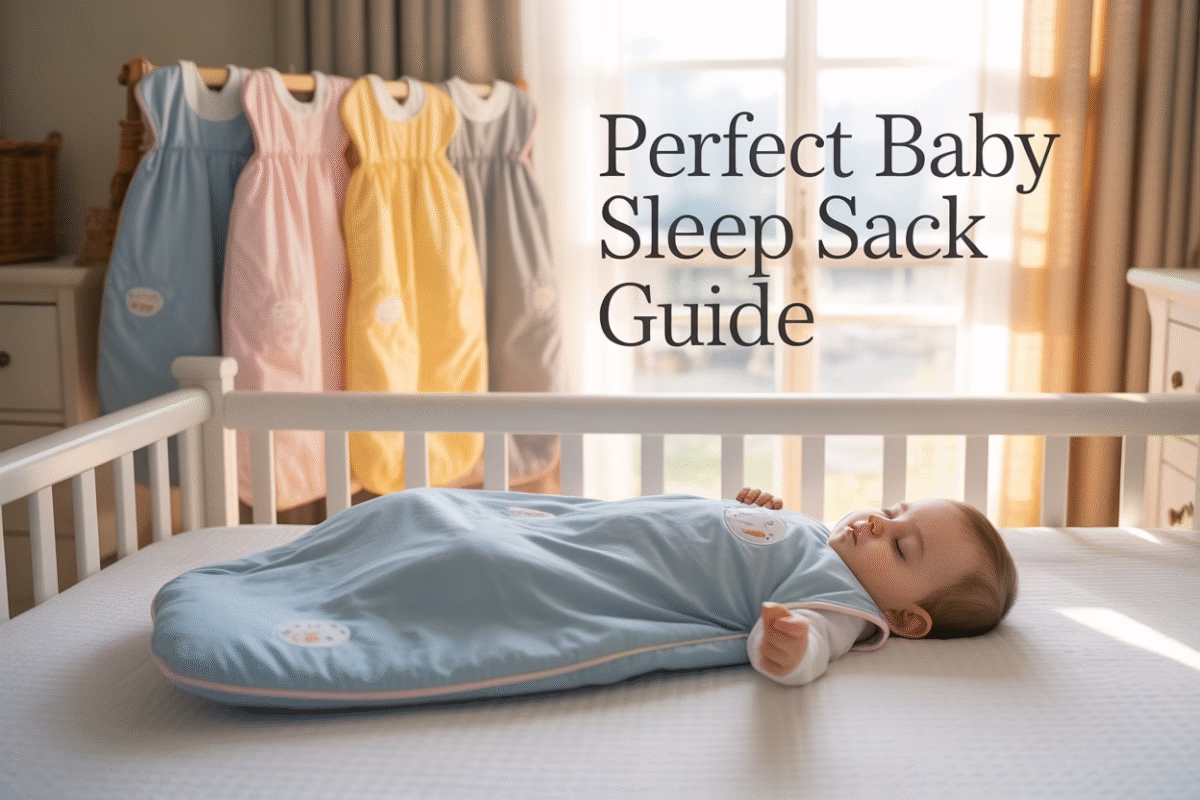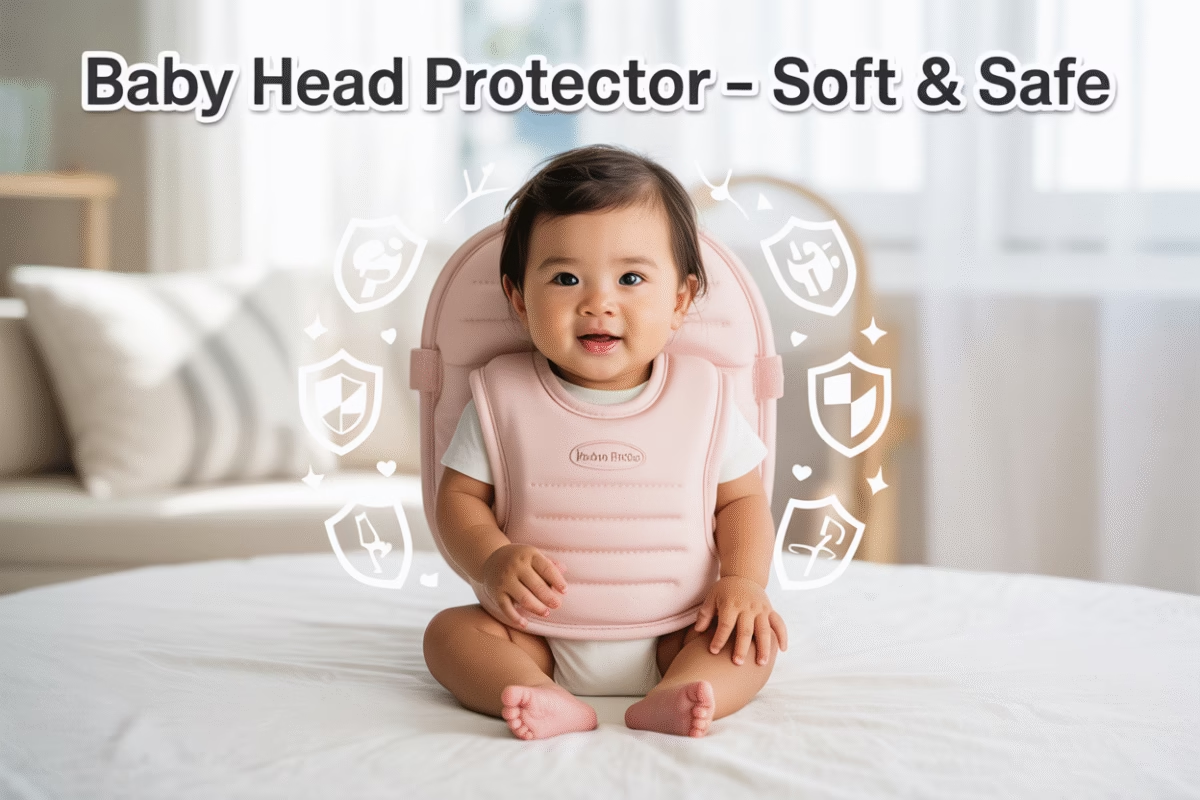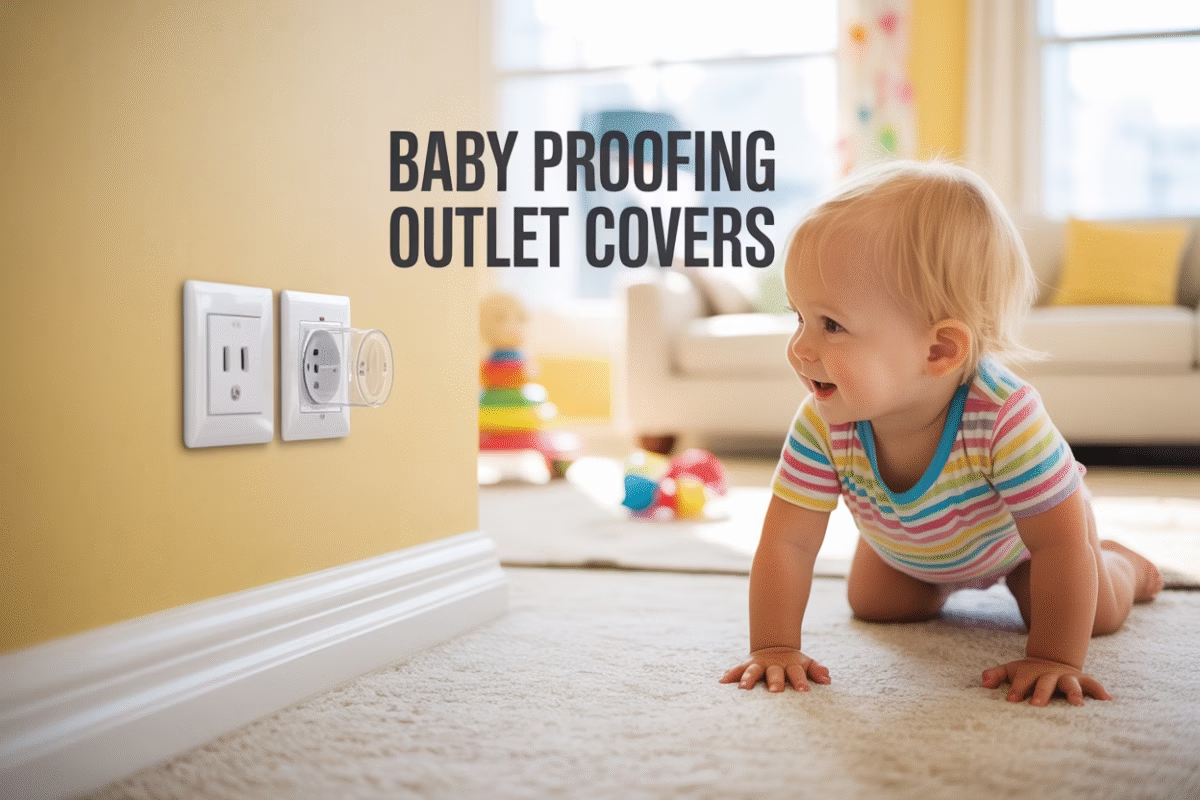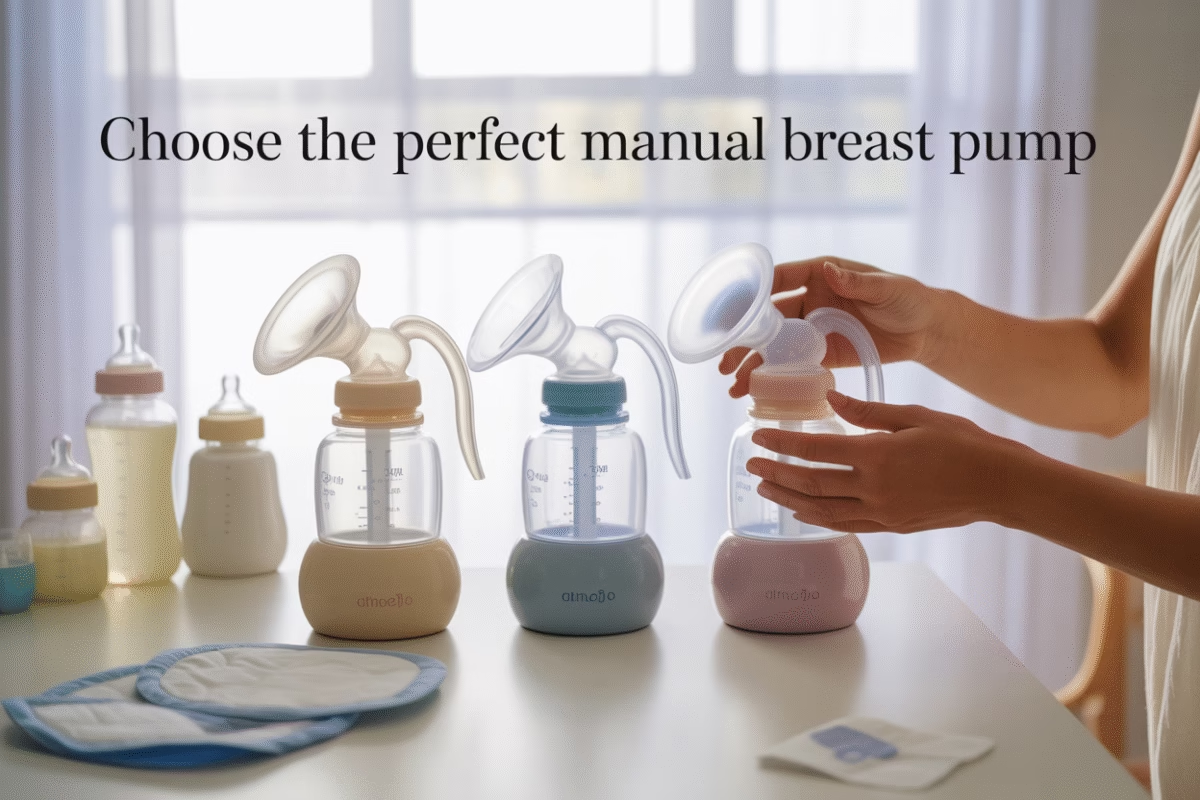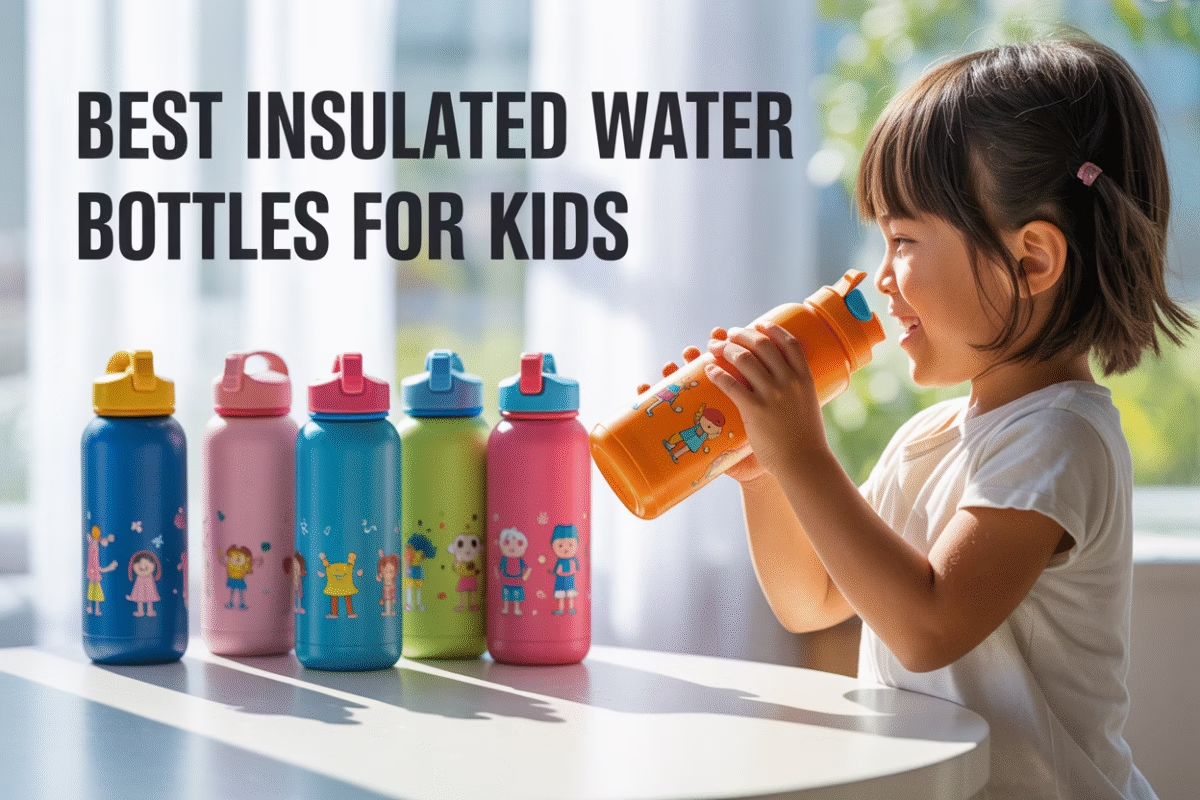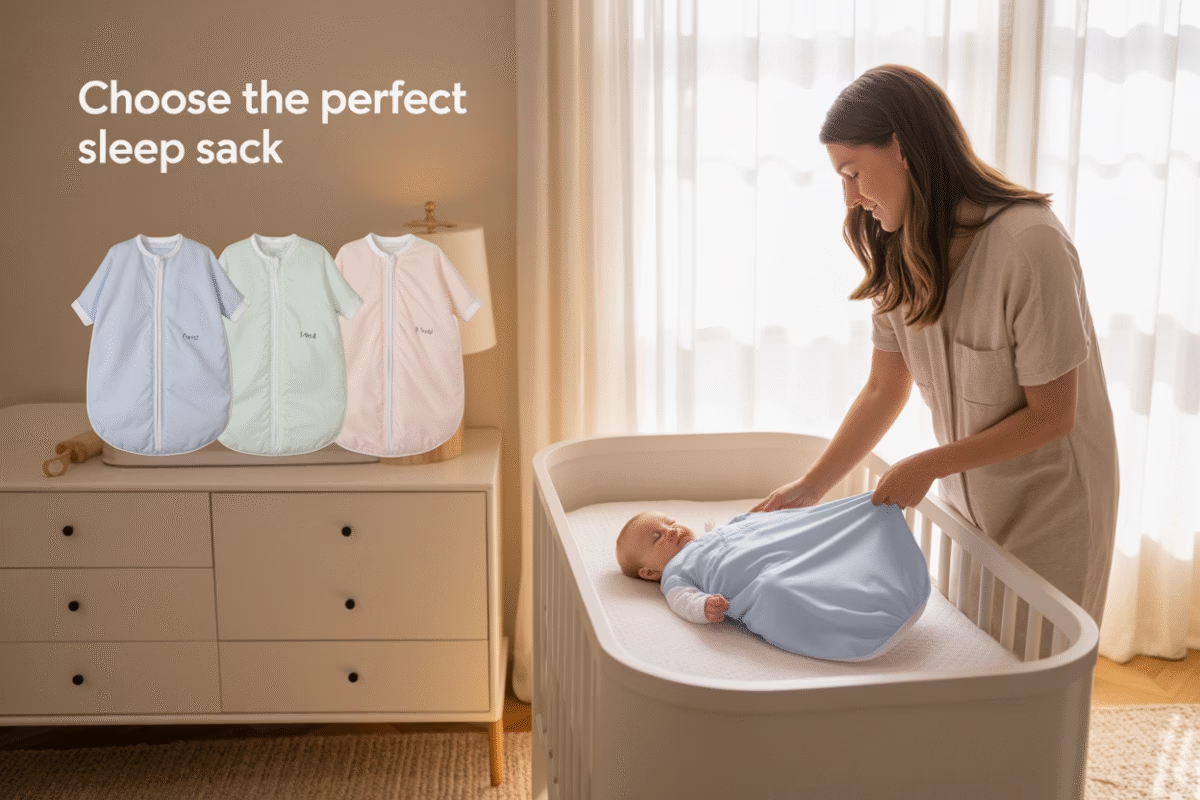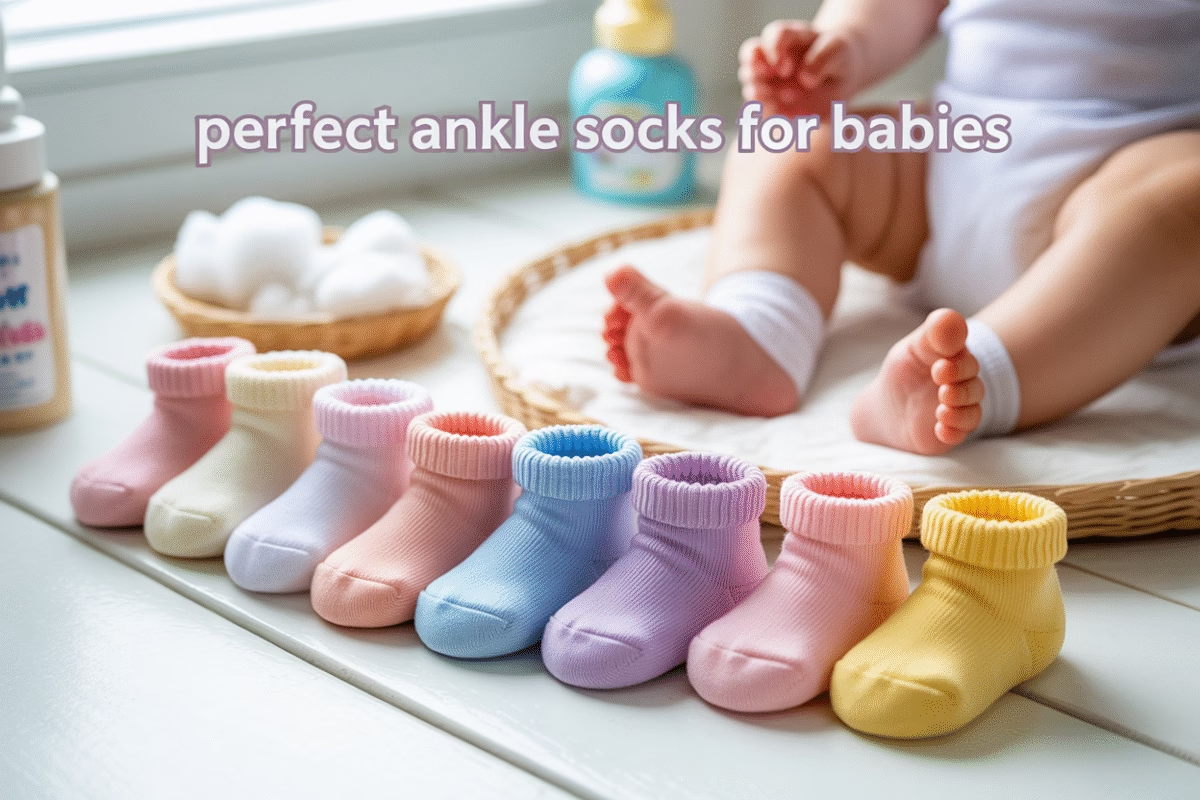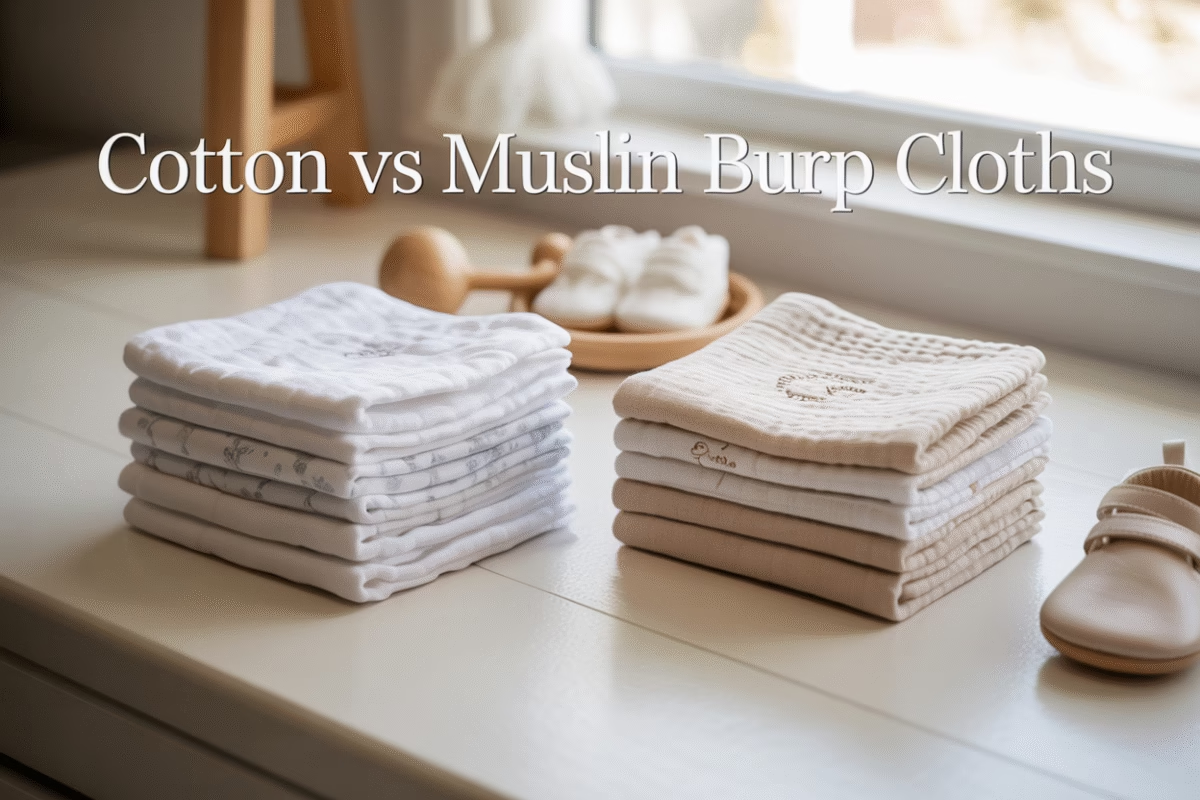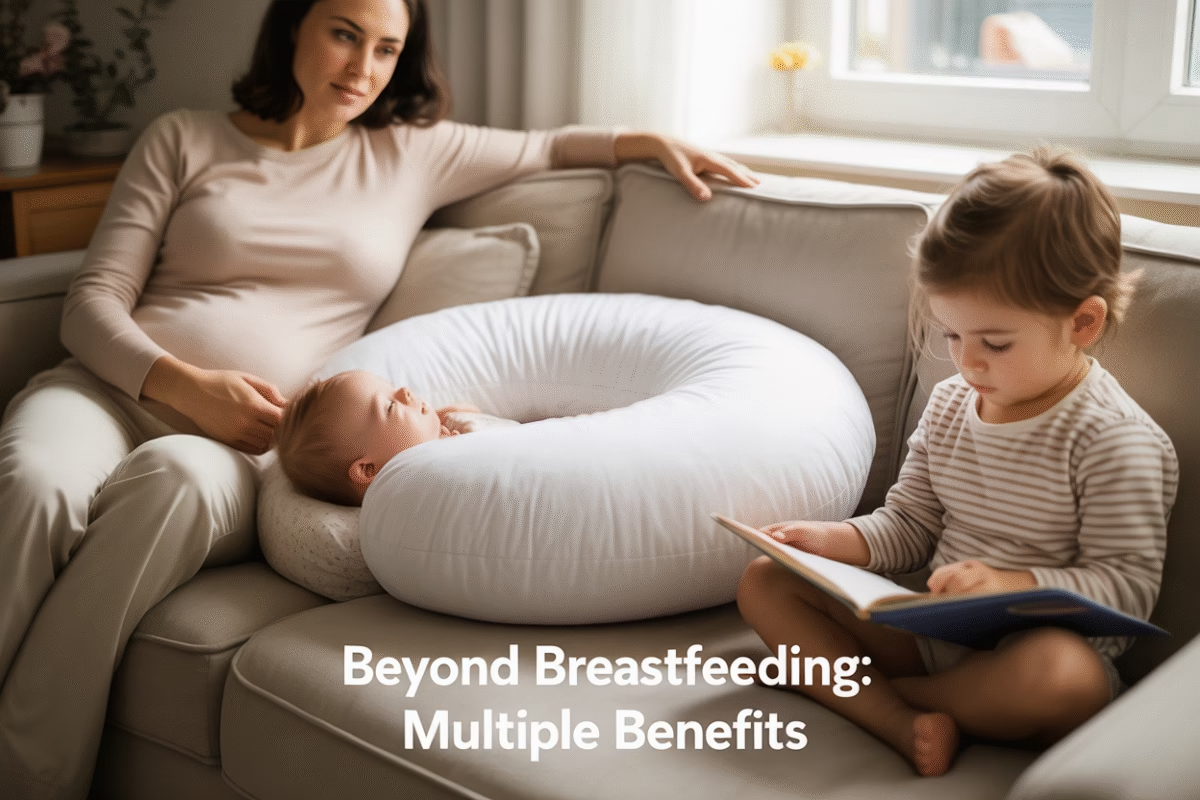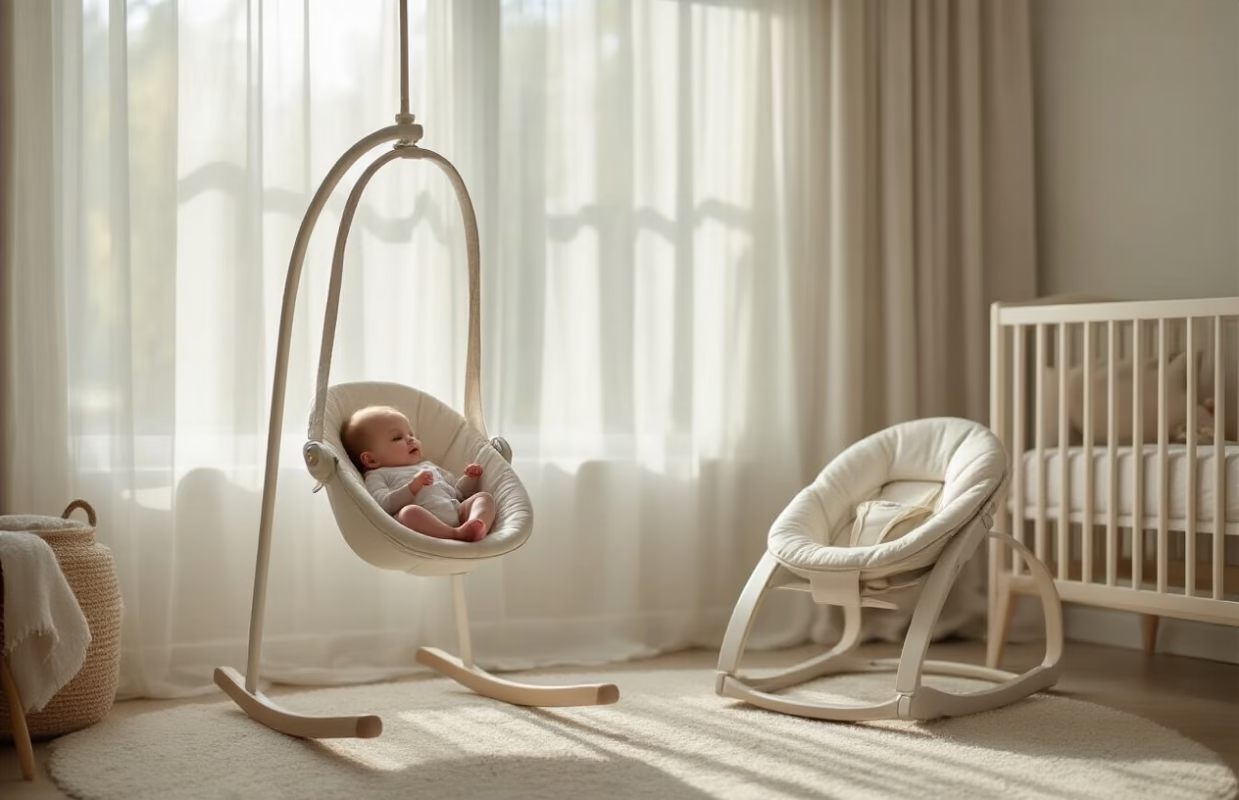Finding the right baby food containers for your little one can feel overwhelming when you’re trying to balance safety, convenience, and budget. This guide is for parents, caregivers, and anyone preparing homemade baby food who wants to make informed choices about BPA-free storage options.
We’ll walk you through the real dangers of BPA exposure in baby food storage and help you spot truly safe materials that protect your child’s health. You’ll also learn how to decode confusing labels and certifications so you can shop with confidence, plus discover the essential safety features that matter most when storing your baby’s meals.
Table of Contents
Understanding BPA Dangers in Baby Food Containers

Health risks BPA poses to developing infants: Baby Food Containers
BPA acts as an endocrine disruptor, meaning it mimics hormones in your baby’s developing body and throws their natural hormone balance out of whack. The chemical specifically interferes with estrogen, which plays a crucial role in your infant’s brain development, reproductive system formation, and overall growth patterns.
Your baby’s liver isn’t mature enough to process and eliminate BPA efficiently, causing the chemical to accumulate in their tiny body at concentrations much higher than what adults would experience. This buildup can trigger early puberty, disrupt normal brain development, and create lasting changes to their immune system function.
Research shows that even tiny amounts of BPA can cause behavioral problems, including increased aggression, hyperactivity, and attention difficulties that may persist into childhood and beyond. The developing nervous system is particularly vulnerable during the first two years of life, making proper baby food containers absolutely critical during this window.
How BPA leaches from plastic containers into food
Heat accelerates BPA migration from plastic walls into your baby’s food at an alarming rate. Warming bottles in the microwave, washing containers in a hot dishwasher, or leaving them in sunny car windows creates the perfect storm for chemical leaching. The molecular structure of BPA becomes unstable under heat, allowing it to break free from the plastic matrix and contaminate whatever food or liquid it touches.
Acidic foods like pureed fruits and tomato-based baby foods act like chemical solvents, actively pulling BPA molecules out of container walls. Even at room temperature, acidic substances create chemical reactions that weaken the plastic bonds holding BPA in place.
Long-term developmental effects of Baby Food Containers on Children
Children exposed to BPA during infancy show measurable differences in brain structure and function that can last throughout their lives. Studies tracking kids from birth reveal higher rates of anxiety, depression, and social difficulties among those with early BPA exposure compared to children who avoided the chemical.
The reproductive system suffers particularly severe consequences from infant BPA exposure. Girls may experience earlier breast development and menstruation, while boys might show altered hormone levels and reproductive development delays. These changes can affect fertility and reproductive health well into adulthood.
Learning disabilities and attention problems also appear more frequently in children who have had significant BPA exposure during their first years. The chemical seems to interfere with normal neural pathway development, creating lasting impacts on memory formation, focus, and cognitive processing speed.
Why traditional plastic containers are unsafe
Most conventional plastic baby food containers contain BPA as a core component that provides flexibility and durability to the material. Manufacturers historically added BPA to create clear, lightweight containers that could withstand repeated use and cleaning – exactly what busy parents needed for feeding routines.
The problem lies in plastic’s molecular structure. BPA molecules aren’t permanently locked into the plastic matrix; they’re held in place by relatively weak chemical bonds that break down over time, use, and exposure to various conditions. Every time you heat, wash, or fill these containers, you’re essentially creating opportunities for BPA to migrate into your baby’s food.
Even plastics labeled as “microwave-safe” or “dishwasher-safe” can release BPA, because these safety ratings typically focus on whether the container will melt or warp, not whether chemicals will leach out. The regulatory standards for these labels don’t account for the unique vulnerability of developing infants to hormone-disrupting chemicals.
Identifying Truly BPA-Free Container Materials

Safe plastic alternatives like PP and LDPE
Polypropylene (PP) and Low-Density Polyethylene (LDPE) stand out as the safest plastic options for baby food containers. PP containers, marked with recycling code #5, offer excellent heat resistance and can handle hot foods without releasing harmful chemicals. These containers work perfectly for storing purees, finger foods, and even microwave reheating when needed.
LDPE plastic, identified by recycling code #4, provides flexibility and durability that parents love. You’ll often find this material in squeezable pouches and soft-sided containers that make feeding easier for both babies and caregivers. Both materials have been extensively tested and approved by pediatric health organizations worldwide.
When shopping for plastic baby food containers, look for clear labeling that specifically mentions PP or LDPE materials. Avoid containers with recycling codes #3, #6, or #7, as these may contain BPA or other concerning chemicals.
Glass containers have benefits for Baby Food Containers
Glass containers offer unmatched safety and purity for storing baby food. They contain zero plastic chemicals, making them the gold standard for health-conscious parents. Glass doesn’t absorb odors, stains, or flavors, which means your baby’s apple puree won’t taste like last week’s sweet potatoes.
The non-porous surface of glass makes cleaning incredibly easy and prevents bacterial buildup. You can safely sterilize glass containers in boiling water or steam sterilizers without worrying about material degradation.
Baby food containers made from glass also offer excellent visibility, allowing you to quickly identify contents and check for freshness. Many glass containers come with measurement markings, making portion control simpler for growing babies.
Stainless steel options for older babies
Stainless steel containers become an excellent choice once babies transition to finger foods and self-feeding around 8-12 months. Food-grade 304 or 316 stainless steel provides exceptional durability and safety without any chemical concerns.
These containers excel at maintaining food temperature, keeping cold items cool, and preventing bacterial growth during longer outings. Stainless steel won’t dent, crack, or scratch easily, making these baby food containers perfect for active toddlers who might drop or throw their food containers.
The smooth surface cleans effortlessly and won’t harbor bacteria in scratches or crevices. Many stainless steel options come with leak-proof lids and compartment dividers, ideal for packing varied finger foods and snacks.
Silicone containers: pros and cons of Baby Food Containers
Silicone containers offer unique advantages for baby food containers, combining flexibility with safety. Food-grade silicone contains no BPA, phthalates, or other harmful chemicals, making it completely safe for babies of all ages.
Pros of silicone containers:
- Flexible and virtually unbreakable
- Freezer to oven safe (temperatures from -40°F to 450°F)
- Easy for babies to grip and hold
- Collapsible options save storage space
- Naturally non-stick surface for easy cleaning
Cons to consider:
- Can absorb strong odors and stains over time
- More expensive than plastic alternatives
- Limited size and shape options
- May retain flavors from strongly seasoned foods
Silicone works particularly well for storing purees, as the flexible material makes it easy to squeeze out contents without waste. The soft texture also makes these containers safe for babies who are learning to self-feed and might chew on their containers.
When choosing silicone baby food containers, verify they’re made from 100% food-grade silicone and check for any certification marks from safety organizations.
Reading Labels and Certifications Correctly: Baby Food Containers

Decoding Recycling Codes on Container Bottoms
Those tiny numbers inside triangles on the bottom of baby food containers aren’t just random symbols – they’re your first line of defense against harmful materials. Each recycling code tells you exactly what type of plastic you’re dealing with, and some are safer than others for storing your little one’s meals.
Codes 3, 6, and 7 should immediately raise red flags. Code 3 indicates PVC plastic, which often contains phthalates that can disrupt hormones. Code 6 means polystyrene (think disposable cups), which can leach styrene into food. Code 7 is the trickiest – it’s a catch-all category that includes both safe bio-plastics and dangerous polycarbonate plastics that definitely contain BPA.
The safer options include codes 1, 2, 4, and 5. Code 2 (HDPE) and code 5 (polypropylene) are your best bets for baby food containers. These plastics are naturally BPA-free and resist chemical leaching even when heated or washed repeatedly. Code 1 (PET) works well for single-use applications but isn’t ideal for containers you’ll use over and over. Code 4 (LDPE) is safe but tends to be too flexible for most container applications.
Recognizing Legitimate BPA-Free Certifications
Real BPA-free certifications come from accredited testing laboratories, not just manufacturer claims. Look for specific certification marks from organizations like NSF International, UL (Underwriters Laboratories), or FDA approval statements. These certifications mean the product underwent rigorous third-party testing to verify it meets safety standards.
Legitimate certifications will include:
- The certifying organization’s logo or mark
- A certification number you can verify online
- Specific testing standard references (like ASTM or CPSC standards)
- Clear expiration dates for the certification
Spotting Misleading Marketing Claims to Avoid: Baby Food Containers
Marketing teams love to use vague language that sounds reassuring but doesn’t guarantee safety. Watch out for phrases like “BPA-free formula” when they’re actually talking about the container, not comprehensive testing. Some companies slap “BPA-free” labels on products while still using other harmful chemicals like BPS or BPF – chemicals that can be just as dangerous as BPA itself.
Be suspicious of claims that seem too broad, like “completely non-toxic” or “100% safe.” No regulatory body allows such sweeping statements because safety depends on many factors, including usage and individual sensitivities. Similarly, “natural plastic” doesn’t mean much since many synthetic materials technically derive from natural sources.
Generic phrases like “meets all safety standards” without specifying which standards are meaningless. Every product sold legally meets some basic standards, but that doesn’t mean they meet the higher standards you want for baby food containers. Always look for specific certifications and testing details rather than relying on marketing buzzwords.
Essential Features for Safe Baby Food Containers

Leak-proof lids that maintain freshness
Quality sealing makes all the difference when storing your baby’s meals. The best baby food containers feature double-sealed lids with silicone gaskets that create an airtight environment. This prevents oxidation, which can rob food of essential nutrients and cause unappetizing color changes. Look for lids with audible clicks or visual indicators that confirm proper closure – you’ll hear a satisfying “pop” when pressing down or see a color change that signals the seal is secure.
Multi-stage locking mechanisms work exceptionally well for preventing accidental spills in diaper bags. Some containers offer twist-and-lock systems that require two motions to open, making them virtually impossible for curious toddlers to access while keeping contents fresh for up to five days in the refrigerator.
Easy-grip designs for small hands
Developing motor skills deserves containers designed with tiny fingers in mind. Rounded edges eliminate sharp corners that can hurt small hands, while textured surfaces provide better grip control. The ideal container width allows toddlers to wrap their fingers around comfortably without straining their grip.
Ergonomic handles or indented sides give children independence during self-feeding stages. Lightweight materials reduce the risk of drops while still maintaining durability. Consider containers with dual-grip zones – smooth areas for adult handling and textured sections specifically sized for little hands. Non-slip bases prevent sliding across high chair trays, reducing frustration during mealtime.
Stackable options for organized storage: Baby Food Containers
Space efficiency transforms chaotic kitchen cabinets into organized feeding stations. Well-designed baby food containers nest perfectly inside each other when empty, maximizing cabinet space. When filled, they stack securely without wobbling or toppling over.
Square or rectangular shapes typically stack more efficiently than round containers, making better use of refrigerator and freezer space. Look for containers with flat lids that double as stable bases for the next container in the stack. Graduated sizing systems – where containers progressively decrease in size – create compact storage solutions that grow with your baby’s appetite.
Microwave and freezer safe capabilities
Temperature flexibility extends the usefulness of your container investment significantly. True microwave safety means containers won’t warp, crack, or leach chemicals when heating food. Look for containers specifically rated for microwave use rather than general “heat-resistant” labels.
Freezer compatibility requires materials that remain flexible at sub-zero temperatures. Brittle containers crack when frozen food expands, creating sharp edges and rendering them unsafe. Quality baby food containers maintain their integrity through temperature ranges from -20°F to 400°F.
Thermal shock resistance prevents cracking when moving containers directly from the freezer to the microwave. This feature saves preparation time and reduces the risk of container failure during heating. Some advanced containers include venting systems in their lids to prevent pressure buildup during microwave heating, eliminating messy explosions while ensuring even heat distribution throughout the food.
Top Container Types for Different Baby Food Stages

Puree containers for 4-6 month olds
Small glass jars with wide mouths work perfectly for storing homemade purees. Look for 2-4 ounce containers that fit comfortably in your baby’s tiny hands as they start showing interest in self-feeding. Silicone baby food containers with snap-on lids offer excellent flexibility and won’t break if dropped, making them ideal for this exploratory stage.
Ice cube trays designed specifically for baby food storage create perfect portion sizes for first foods. Each cube typically holds about one ounce, which matches a beginner’s appetite perfectly. Choose silicone ice cube trays with covers to prevent freezer burn and contamination.
Freezer-safe baby food containers should have tight-sealing lids to maintain freshness and prevent spills during the thawing process. Glass containers work exceptionally well for reheating purees, while BPA-free plastic options offer lightweight convenience for busy parents juggling multiple feeding schedules.
Finger food storage for 6-12 months
Compartmented containers become essential as babies transition to finger foods and combination meals. Look for baby food containers with 2-3 separate sections to keep different textures and flavors from mixing. This prevents soggy crackers and maintains the distinct tastes that help develop your baby’s palate.
| Container Size | Best For | Storage Duration |
|---|---|---|
| 4-6 oz | Chopped fruits, soft vegetables | 2-3 days refrigerated |
| 8-10 oz | Mixed meals, pasta combinations | 3-4 days refrigerated |
| 2-3 oz portions | Protein cubes, cheese pieces | 1-2 days refrigerated |
Snap-lock lids provide secure closure that older babies can’t accidentally open, while still being easy enough for parents to access quickly during busy meal times.
Toddler portion containers for 12+ months
Larger capacity containers accommodate growing appetites and more complex meals. 8-12 ounce baby food containers work well for storing complete meals that include proteins, vegetables, and grains. These bigger portions reduce the frequency of meal prep while ensuring your toddler has variety throughout the week.
Bento-style containers with multiple compartments encourage balanced eating by presenting different food groups in appealing, organized sections. Choose containers with removable dividers so you can adjust portion sizes as your toddler’s appetite changes and grows.
Leak-proof containers become critical for active toddlers who want to carry their own snacks. Look for containers with double-sealed lids and rubber gaskets that prevent messy spills in diaper bags, car seats, and strollers.
Microwave-safe options give you flexibility for reheating leftovers and preparing warm meals quickly. Glass containers handle temperature changes better than plastic and won’t retain food odors or stains over time. However, ensure any glass containers have protective sleeves or are made with tempered glass designed for children’s use.
Smart Shopping Strategies for Best Value

Where to find quality BPA-free containers
Target, Walmart, and Amazon offer extensive selections of quality baby food containers at competitive prices. Target’s Up & Up brand provides reliable BPA-free options that perform just as well as premium alternatives. Costco and Sam’s Club stock bulk packages from trusted brands like OXO Tot and Munchkin, perfect for families planning.
Specialty baby stores like Buy Buy Baby carry premium lines with detailed safety certifications displayed prominently. These retailers often have knowledgeable staff who understand the differences between container materials and can guide you toward the safest options.
Online marketplaces provide the widest selection and customer reviews that reveal real-world performance. Check multiple retailers before purchasing, as prices can vary significantly even for identical products.
Budget-friendly options that don’t compromise safety
Glass baby food containers from brands like Gerber offer excellent value without sacrificing safety. While the initial cost is higher than that of plastic alternatives, glass containers last indefinitely with proper care and contain no harmful chemicals.
Silicone containers from brands like Green Sprouts provide middle-ground pricing with excellent safety profiles. These flexible containers resist stains and odors while remaining completely free from BPA.
Store brands often match name-brand quality at 30-40% lower prices. Walmart’s Parent’s Choice and Target’s Up & Up lines undergo the same safety testing as premium brands but cost significantly less.
Look for multi-pack deals that reduce per-unit costs. Many retailers offer 6-pack or 12-pack options that bring individual container costs down substantially.
Bulk buying tips for growing families
Purchase containers in multiple sizes during sales events. Black Friday, Amazon Prime Day, and back-to-school sales typically offer 25-50% discounts on baby feeding supplies.
Buy matching sets rather than individual containers. Uniform sizes stack better in fridges and freezers, maximizing storage space while maintaining organization.
Consider your baby’s growth timeline when bulk buying. Newborns need 2-4 ounce containers, while toddlers require 6-8 ounce sizes. Buying a variety pack prevents having containers that quickly become too small.
When to invest in premium container sets
Premium glass container sets justify their higher cost for families planning multiple children or frequent meal prep sessions. Brands like Wean Green and Sage Spoonfuls offer superior durability and come with comprehensive warranties.
Invest in premium options when you need specialized features like leak-proof seals for travel or stackable designs for limited storage space. These features prevent food waste and reduce cleanup time.
Consider premium sets if you prepare homemade baby food daily. Heavy-duty containers withstand repeated heating, cooling, and washing cycles without degrading or staining.
Professional-grade containers make sense for daycare providers or families feeding multiple children simultaneously. The durability and safety features offset the higher initial investment through extended use.
Proper Care and Maintenance for Longevity

Safe cleaning methods that preserve container integrity
Hand washing remains the gold standard for cleaning baby food containers. Use warm water with mild, fragrance-free dish soap to gently clean all surfaces. Avoid abrasive sponges or scrubbers that can create microscopic scratches where bacteria might hide. A soft bottle brush works perfectly for reaching into deep containers and removing stubborn food residue.
Skip the dishwasher’s heated dry cycle, which can cause plastic containers to warp or degrade over time. If you must use a dishwasher, place containers on the top rack only and use the air-dry setting. The high temperatures in dishwashers can accelerate chemical breakdown in plastic materials, even BPA-free ones.
Never use bleach or harsh chemical cleaners on baby food containers. These aggressive substances can break down container materials and leave harmful residues. For stubborn stains or odors, create a paste with baking soda and water, let it sit for 15 minutes, then rinse thoroughly.
Sterilizing becomes important when your baby is under six months old. Boiling water sterilization works well, but limit exposure time to prevent material degradation. Steam sterilizers offer a gentler alternative that effectively kills bacteria without subjecting containers to prolonged high heat.
Storage tips to prevent chemical breakdown
Temperature control plays a huge role in maintaining container safety. Store baby food containers in cool, dry places away from direct sunlight. Heat accelerates chemical breakdown in all materials, making proper storage location critical for long-term safety.
Avoid storing containers in garages, attics, or near heating vents where temperatures fluctuate dramatically. These temperature swings cause materials to expand and contract repeatedly, potentially creating stress fractures or weakening the molecular structure.
Keep containers away from strong-smelling items like cleaning supplies or air fresheners. Many container materials can absorb odors and potentially harmful chemicals from their environment. A dedicated cabinet or pantry shelf works best for storage.
Stack containers carefully to prevent scratches and stress marks. Use protective padding between stacked items, and don’t overload storage areas. Weight pressure can cause containers to crack or develop weak spots that compromise their integrity.
When to replace containers for continued safety
Visual inspection should happen regularly with baby food containers. Look for any cracks, chips, or deep scratches that could harbor bacteria or indicate material breakdown. Even hairline cracks compromise container safety and require immediate replacement.
Color changes signal potential chemical breakdown. If containers develop a cloudy appearance, a yellow tint, or any discoloration, replace them immediately. These visual changes often indicate that the material structure has been compromised.
Warping or shape changes mean the container has been exposed to excessive heat or stress. Warped containers don’t seal properly and may have weakened molecular bonds that could allow chemical migration into food.
Replace containers every 12-18 months with regular use, even if they appear undamaged. Daily washing, temperature changes, and normal wear gradually break down materials at a microscopic level. This timeline ensures you’re always using containers at peak safety performance.
Strong odors that persist after thorough cleaning indicate the material has absorbed substances that shouldn’t be near baby food. When containers start retaining smells despite proper washing, they’ve reached the end of their safe, useful life.
Any container that’s been accidentally exposed to extreme heat – like being left in a hot car or going through a dishwasher’s heated dry cycle multiple times – should be replaced immediately, regardless of visible condition.

Keeping your baby safe from harmful chemicals like BPA doesn’t have to be overwhelming when you know what to look for. The key is understanding which materials are genuinely safe, reading those labels carefully, and choosing containers that match your baby’s eating stage. Glass, stainless steel, and certified BPA-free plastics all make excellent choices when they come with the right features like leak-proof lids and easy-to-clean designs.
Smart shopping means thinking beyond just the price tag. Look for reputable certifications, invest in containers that will grow with your child, and don’t forget that proper care will keep these containers safe and functional for years to come.







